Cracking and Research on the verification code of polar test slider (I): AST reduction confusion JS
statement
Original articles, please do not reprint!
The content of this paper is limited to security research and does not disclose the specific source code. Everyone is responsible for maintaining network security.
Hyperlinks to articles related to this article:
- Cracking and Research on the verification code of polar test slider (I): AST reduction confusion JS
- Crack and Research on verification code of polar test slider (II): restoration of notch image
- Crack and Research on verification code of extreme test slider (3): slider gap identification
- Decoding and research of polar slider verification code (4): slider trajectory construction
- Decoding and Research on the verification code of polar test slider (5): request analysis and encryption parameter cracking
1, Environmental installation
1. node installation
1.1. node Download
Click here Official download link of node Download the installation package and install
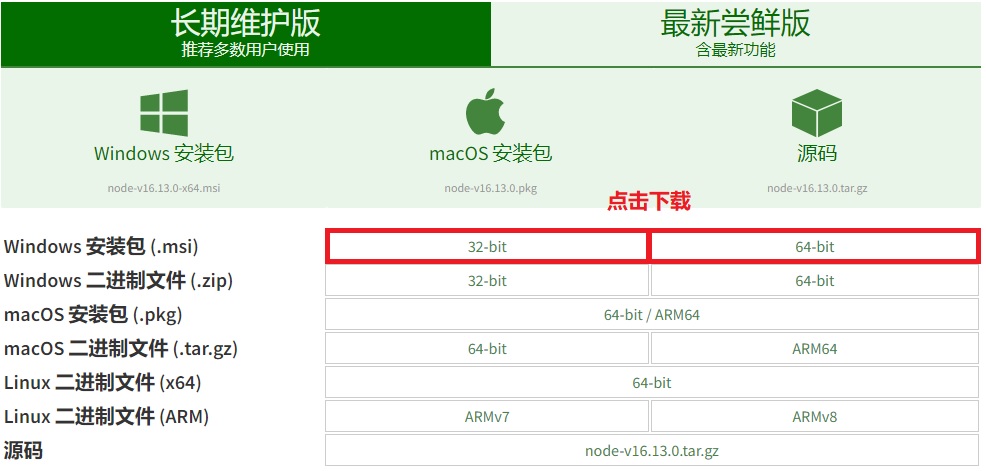
1.2. Configure environment variables
1.3. node installation detection
node --version # v14.16.0
1.4. pycharm configuring node environment
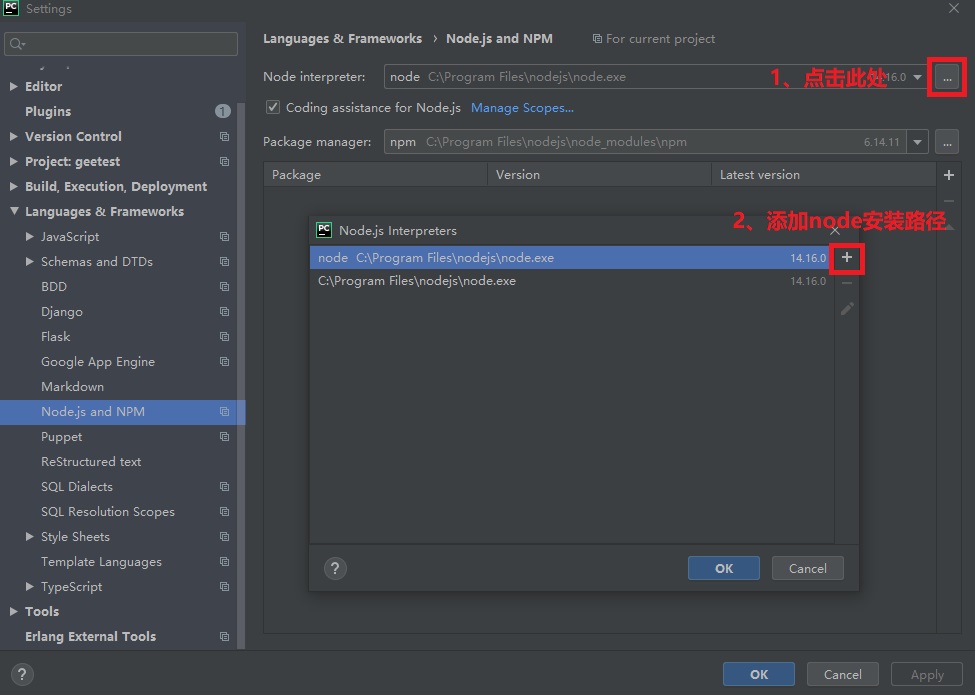
2. babel library installation
2.1. babel library installation command
npm install @babel/core --save-dev
2.2. babel library installation detection
node # Enter the node environment
require("@babel/parser") # Introducing babel Library

2, AST restore confusion JS
Warm tip: polar test JS all adopt the same confusion method. Fullpage used in later articles 9.0.7. js ,click.3.0.2.js, etc. are restored in this way
If you don't understand AST syntax tree, you can ask Du Niang
This article is based on slide 7.8.4. JS file as an example, Online AST syntax tree conversion tool
aHR0cHM6Ly9zdGF0aWMuZ2VldGVzdC5jb20vc3RhdGljL2pzL3NsaWRlLjcuOC40Lmpz
1. Module import
Import and restore the function blocks required by JS
const parser = require("@babel/parser");
const traverse = require("@babel/traverse").default;
const t = require("@babel/types");
const generator = require("@babel/generator").default;
const fs = require("fs");
2. Copy and restore the js source code needed
The blogger is too lazy. Let's copy it by ourselves. (the source code is too long, reduce the length...)
This part of the code is slide 7.8.4. Functions in JS files as like as two peas are copied, and will be used in restore.
AaWgt.Bq_ = function () {}();
AaWgt.CyZ = function () {}();
AaWgt.Dvn = function () {};
AaWgt.EeS = function () {};
function AaWgt() {}
3. Detailed explanation of AST function
3.1. replace_unicode
There are many binary and Unicode codes for characters in js code. This function converts other character codes in the code into utf-8 codes
// Delete the extra attribute in the node (binary, Unicode and other encoding - > UTF-8)
function replace_unicode(path) {
let node = path.node;
if (node.extra === undefined)
return;
delete node.extra;
}
Before restore

After restore
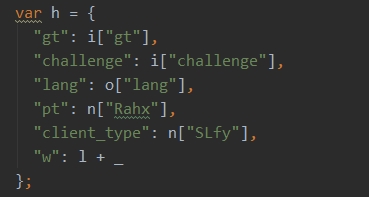
3.2. replace_unicode, replace_name_array, replace_Dvn
A lot of code like var avml = axzpo Expression for DVN, axzpo DVN is actually a large array. The following function replaces it with specific characters
// Define a global variable to store the name of the variable to be replaced
let name_array = [];
function get_name_array(path) {
let {kind, declarations} = path.node
if (kind !== 'var'
|| declarations.length !== 3
|| declarations[0].init === null
|| declarations[0].init.property === undefined)
return;
if (declarations[0].init.property.name !== "Dvn")
return;
// Get the variable name of the node to be replaced
let name1 = declarations[0].id.name
// Get the name of the variable to be output
let name2 = declarations[2].id.name
// Store variable names in an array
name_array.push(name1, name2)
// Delete next node
path.getNextSibling().remove()
// Delete next node
path.getNextSibling().remove()
// Delete path node
path.remove()
}
function replace_name_array(path) {
let {callee, arguments} = path.node
if (callee === undefined || callee.name === undefined)
return;
// Not in name_ The nodes in the array are not replaced
if (name_array.indexOf(callee.name) === -1)
return;
// Call aawgt Get the result with DVN function
let value = AaWgt.Dvn(arguments[0].value);
// Create nodes and replace results
let string_node = t.stringLiteral(value)
path.replaceWith(string_node)
}
function replace_Dvn(path) {
let {arguments, callee} = path.node
// Parse arguments parameter
if (arguments.length !== 1) return;
if (arguments[0].type !== 'NumericLiteral') return;
// Parsing callee
if (callee.type !== 'MemberExpression') return;
let {object, property} = callee;
if (object.type !== 'Identifier' || property.type !== 'Identifier') return;
if (property.name === 'Dvn') {
// Calculated value
let value = AaWgt.Dvn(arguments[0].value);
// Create node and replace
let string_node = t.stringLiteral(value)
path.replaceWith(string_node)
}
}
Before restore
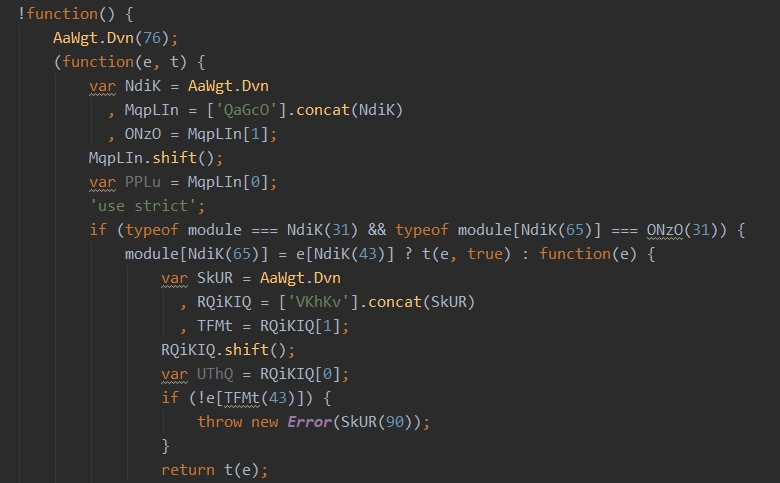
After restore
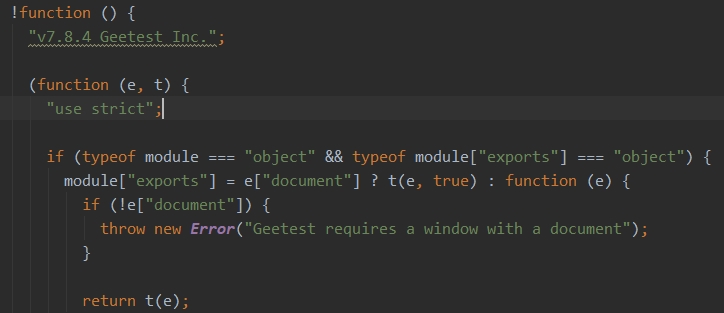
3.3. replace_ForStatement
There are a lot of switch case structures in js code, which is not conducive to code logic analysis, and the control flow needs to be flattened
// Control flow flattening
function replace_ForStatement(path) {
var node = path.node;
// Get the previous node, that is, VariableDeclaration
var PrevSibling = path.getPrevSibling();
// Judge the attributes of the previous node to prevent error reporting
if (PrevSibling.container === undefined
|| PrevSibling.container[0].declarations === undefined
|| PrevSibling.container[0].declarations[0].init === null
|| PrevSibling.container[0].declarations[0].init.object === undefined
|| PrevSibling.container[0].declarations[0].init.object.object === undefined)
return;
if (PrevSibling.container[0].declarations[0].init.object.object.callee.property.name !== 'EeS')
return;
// SwitchStatement node
var body = node.body.body;
// Judge the body[0] attribute and body[0] of the current node Whether discriminator exists
if (!t.isSwitchStatement(body[0]))
return;
if (!t.isIdentifier(body[0].discriminant))
return;
// Gets the initial value of the control flow
var argNode = PrevSibling.container[0].declarations[0].init;
var init_arg_f = argNode.object.property.value;
var init_arg_s = argNode.property.value;
var init_arg = AaWgt.EeS()[init_arg_f][init_arg_s];
// Extract the value of the if judgment parameter in the for node as the judgment parameter
var break_arg_f = node.test.right.object.property.value;
var break_arg_s = node.test.right.property.value;
var break_arg = AaWgt.EeS()[break_arg_f][break_arg_s];
// Extract all case s under switch
var case_list = body[0].cases;
var resultBody = [];
// Traverse all case s
for (var i = 0; i < case_list.length; i++) {
for (; init_arg != break_arg;) {
// Extract and calculate the value of conditional judgment after case
var case_arg_f = case_list[i].test.object.property.value;
var case_arg_s = case_list[i].test.property.value;
var case_init = AaWgt.EeS()[case_arg_f][case_arg_s];
if (init_arg == case_init) {
//All nodes under the current case
var targetBody = case_list[i].consequent;
// Delete the break node and some useless code of the previous node of the break node
if (t.isBreakStatement(targetBody[targetBody.length - 1])
&& t.isExpressionStatement(targetBody[targetBody.length - 2])
&& targetBody[targetBody.length - 2].expression.right.object.object.callee.object.name == "AaWgt") {
// Extract the previous node ajgjj of the break node Two index values after emf()
var change_arg_f = targetBody[targetBody.length - 2].expression.right.object.property.value;
var change_arg_s = targetBody[targetBody.length - 2].expression.right.property.value;
// Modify the initial value of control flow
init_arg = AaWgt.EeS()[change_arg_f][change_arg_s];
targetBody.pop(); // Delete break
targetBody.pop(); // Delete the previous node of the break node
}
//Delete break
else if (t.isBreakStatement(targetBody[targetBody.length - 1])) {
targetBody.pop();
}
resultBody = resultBody.concat(targetBody);
break;
} else {
break;
}
}
}
//Replace the for node, replace one node with multiple nodes, and use replaceWithMultiple
path.replaceWithMultiple(resultBody);
//Delete previous node
PrevSibling.remove();
}
Before restore

After restore
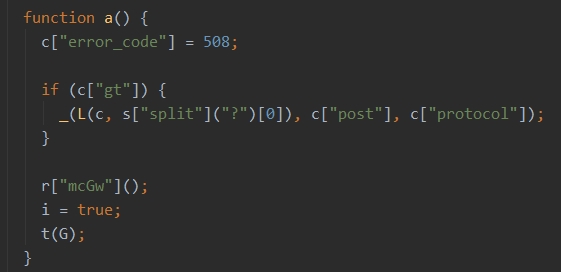
3.4. delete_func
The restore process is over. It's time to delete some irrelevant functions.
// Delete irrelevant functions
function delete_func(path) {
let {expression} = path.node
if (expression === undefined
|| expression.left === undefined
|| expression.left.property === undefined)
return;
if (expression.left.property.name === 'Bq_'
|| expression.left.property.name === 'Dvn'
|| expression.left.property.name === 'CyZ'
|| expression.left.property.name === 'EeS'
) {
path.remove()
}
}
4. AST reduction process
4.1. AST restore overall process
// File location to decode
let encode_file = "slide.7.8.4.js"
// Decoded file location
let decode_file = "ast_slide.7.8.4.js_init.js"
// Read the js file to be decoded. Note that the file is encoded in utf-8 format
let jscode = fs.readFileSync(encode_file, {encoding: "utf-8"});
// Modify js code into AST syntax tree
let ast = parser.parse(jscode);
// AST structure modification logic
const visitor = {
StringLiteral: {
enter: [replace_unicode]
},
VariableDeclaration: {
enter: [get_name_array]
},
CallExpression: {
enter: [replace_name_array, replace_Dvn]
},
ForStatement: {
enter: [replace_ForStatement]
},
ExpressionStatement: {
enter: [delete_func]
},
}
// Traverse the syntax tree node and call the modification function
traverse(ast, visitor);
// Convert ast into js code, {jsescoption: {"minimal": true}} Unicode - > Chinese
let {code} = generator(ast, opts = {jsescOption: {"minimal": true}});
// Save js code to a file
fs.writeFile(decode_file, code, (err) => {
});
4.2. Polar test different js or different version restore methods
js version used in this series of articles:
fullpage.9.0.7.js: https://static.geetest.com/static/js/fullpage.9.0.7.js slide.7.8.4.js: https://static.geetest.com/static/js/slide.7.8.6.js click.3.0.2.js((to be used in the later selected articles): https://static.geetest.com/static/js/click.3.0.2.js
Little friends can find that the pole test fullpage 9.0. x.js,slide.7.8.x.js,click.3.0.x.js all use the same confusion. Therefore, the AST restore method in this article can be used to restore the latest version of JS. The following is a case that will apply to slide 7.8.4. JS to replace the restored AST code with the applicable fullpage 9.0.7. JS
Step 1: add fullpage 9.0.7. JS part of the source code is replaced in the AST file.

Step 2: use the replacement function of the compiler to replace all the function names in the AST code.
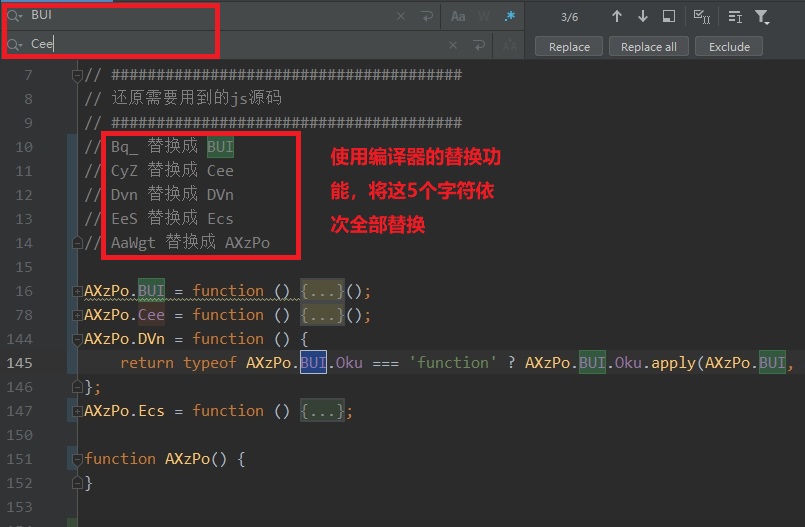
Step 3: finally, remember to change the file to be decoded into fullpage 9.0.7. js
// File location to decode let encode_file = "fullpage.9.0.7.js" // Decoded file location let decode_file = "ast_fullpage.9.0.7.js_init.js"
3, Conclusion
Links: Crack and research of polar slider verification code (II): restoration of notch image
This issue is over. If it helps you, remember to collect and pay attention to it. Later articles will be updated continuously~~~
